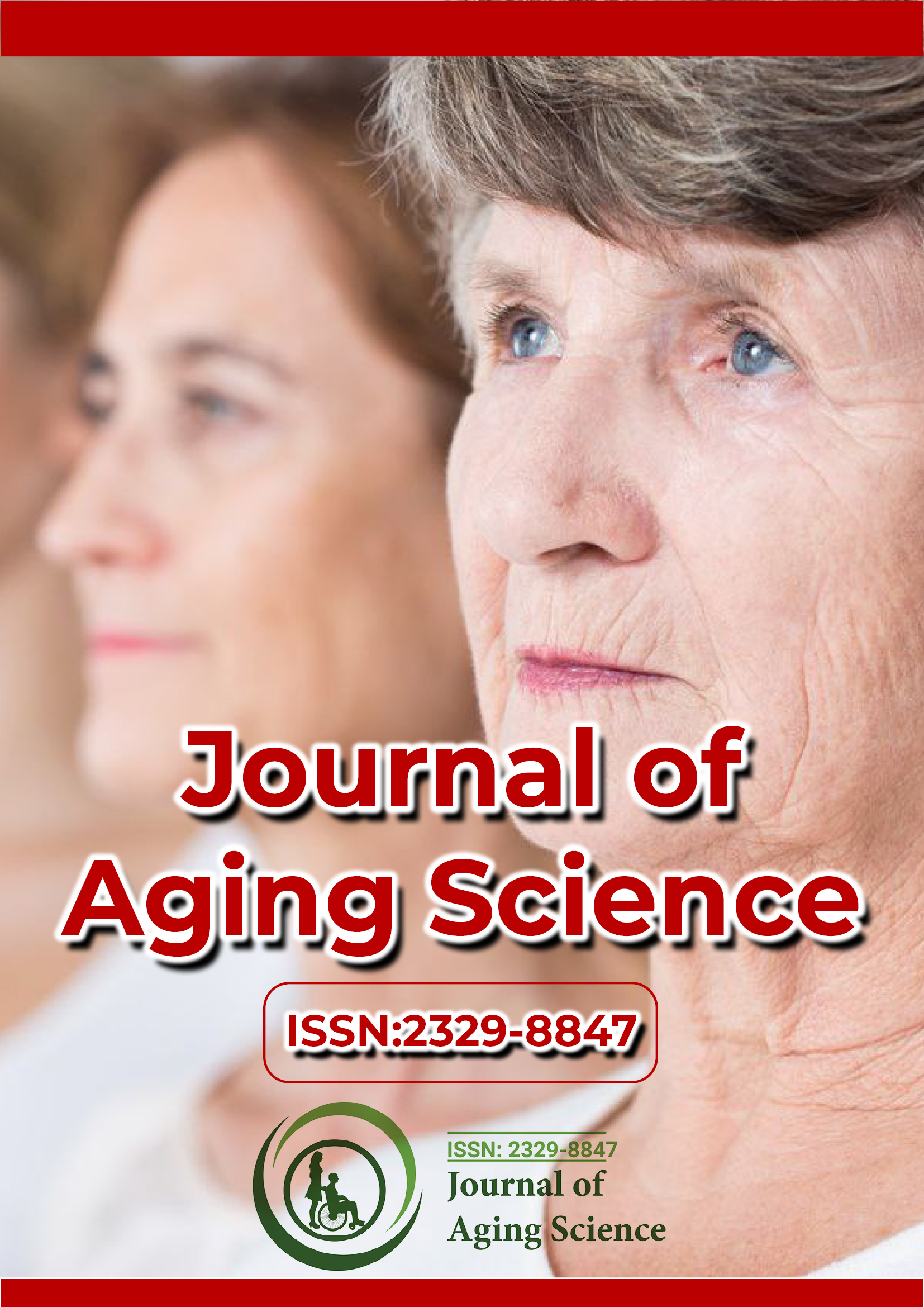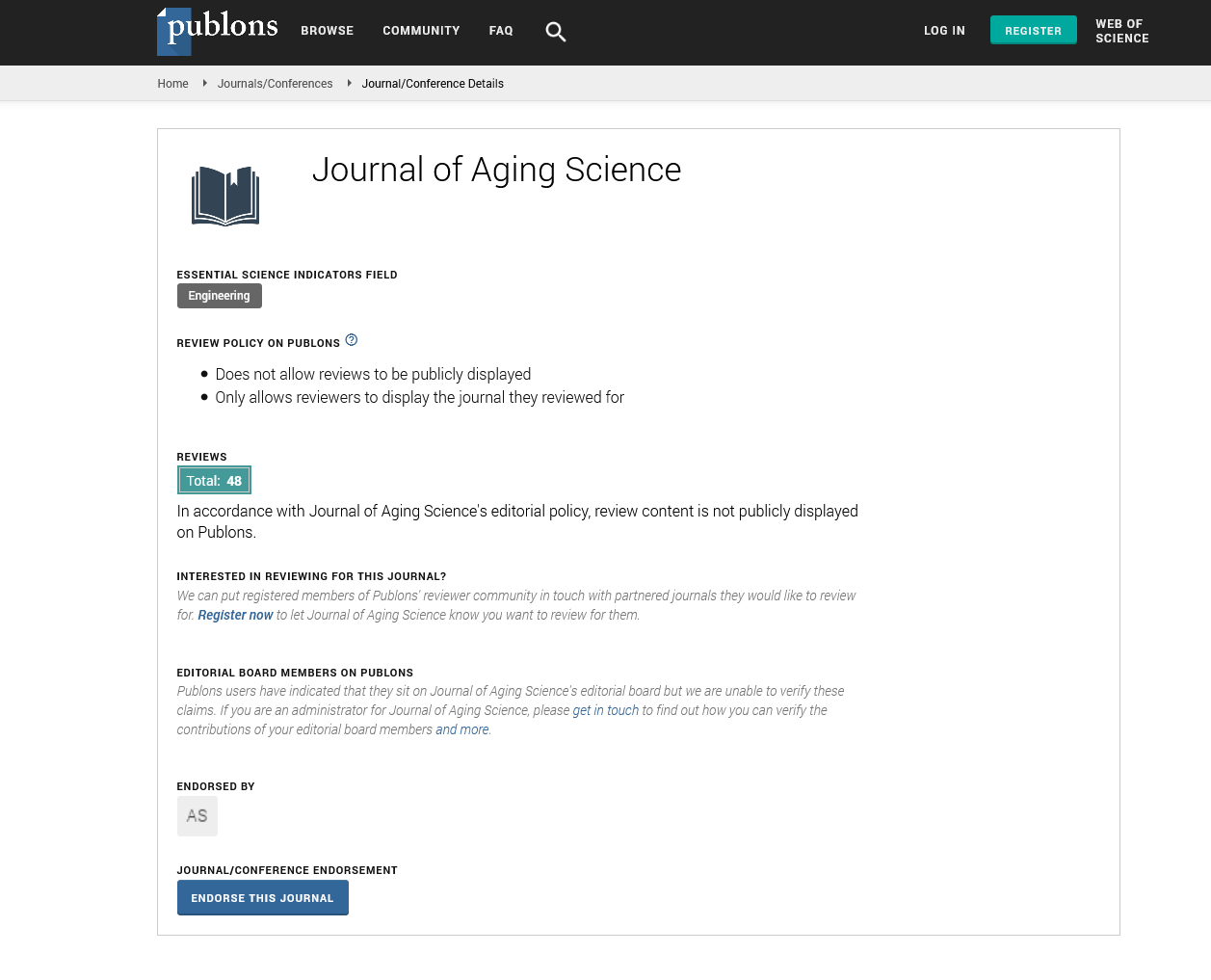Indexed In
- Open J Gate
- Academic Keys
- JournalTOCs
- ResearchBible
- RefSeek
- Hamdard University
- EBSCO A-Z
- OCLC- WorldCat
- Publons
- Geneva Foundation for Medical Education and Research
- Euro Pub
- Google Scholar
Useful Links
Share This Page
Journal Flyer

Open Access Journals
- Agri and Aquaculture
- Biochemistry
- Bioinformatics & Systems Biology
- Business & Management
- Chemistry
- Clinical Sciences
- Engineering
- Food & Nutrition
- General Science
- Genetics & Molecular Biology
- Immunology & Microbiology
- Medical Sciences
- Neuroscience & Psychology
- Nursing & Health Care
- Pharmaceutical Sciences
Commentary - (2025) Volume 13, Issue 1
Role of NAD+ Metabolism in Aging and Longevity
Katrien Baelen*Received: 27-Feb-2025, Manuscript No. JASC-25-28490; Editor assigned: 01-Mar-2025, Pre QC No. JASC-25-28490 (PQ); Reviewed: 07-Mar-2025, QC No. JASC-25-28490; Revised: 14-Mar-2025, Manuscript No. JASC-25-28490 (R); Published: 28-Mar-2025, DOI: 10.35248/2329-8847.25.13.402
Description
Nicotinamide Adenine Dinucleotide (NAD+) is a vital coenzyme involved in numerous cellular processes, including energy metabolism, DNA repair and cellular signaling. NAD+ levels decline with age, contributing to metabolic dysfunction, increased susceptibility to age-related diseases and reduced lifespan. Understanding the role of NAD+ metabolism in aging and longevity provides insights into potential therapeutic strategies aimed at maintaining cellular homeostasis and promoting healthy aging.
NAD+ and cellular metabolism
NAD+ serves as an important cofactor in redox reactions, facilitating ATP production through glycolysis, the Tricarboxylic Acid (TCA) cycle and oxidative phosphorylation. Additionally, NAD+ is a substrate for several enzyme families that regulate aging and longevity, including sirtuins, poly(ADP-ribose) Polymerases (PARPs) and CD38/CD157 ectoenzymes.
Sirtuins: NAD+ dependent deacetylases that regulate mitochondrial function, genomic stability and metabolic health. SIRT1, SIRT3 and SIRT6 have been implicated in extending lifespan by enhancing stress resistance and reducing inflammation.
PARPs: DNA repair enzymes that consume NAD+ to maintain genomic integrity. While important for preventing mutations, excessive PARP activity can deplete cellular NAD+ pools.
CD38/CD157: Ectoenzymes that degrade NAD+ and regulate immune function. CD38 levels increase with age, accelerating NAD+ depletion and contributing to metabolic decline.
NAD+ decline and aging
Aging is associated with a progressive decline in NAD+ levels, primarily due to increased NAD+ consumption and decreased biosynthesis. This decline contributes to several hallmarks of aging:
Mitochondrial dysfunction: Reduced NAD+ impairs oxidative phosphorylation, leading to decreased ATP production and energy metabolism.
Genomic instability: Insufficient NAD+ compromises DNA repair mechanisms, increasing the risk of mutations and cellular senescence.
Inflammation and immune dysfunction: Elevated CD38 activity increases NAD+ depletion, promoting chronic inflammation and immune aging.
Metabolic dysregulation: NAD+ depletion impairs glucose and lipid metabolism, increasing the risk of age-related metabolic diseases.
Therapeutic strategies to boost NAD+ levels
Given the critical role of NAD+ in aging, several interventions have been explored to restore NAD+ levels and promote longevity:
NAD+ precursors: Supplementation with Nicotinamide Riboside (NR) and Nicotinamide Mononucleotide (NMN) has shown promise in increasing NAD+ levels, improving mitochondrial function and extending lifespan in preclinical models.
Caloric restriction and fasting: Dietary interventions enhance NAD+ biosynthesis and sirtuin activity, representing the benefits of longevity-promoting strategies.
CD38 inhibition: Reducing CD38 activity through pharmacological inhibitors or genetic interventions helps preserve NAD+ levels and mitigate age-related decline.
Exercise and lifestyle modifications: Physical activity has been shown to enhance NAD+ metabolism, improve mitochondrial health and extend healthspan.
Conclusion
NAD+ metabolism plays a fundamental role in aging and longevity by regulating mitochondrial function, genomic stability and cellular resilience. Targeting NAD+ decline through supplementation, lifestyle interventions and pharmacological approaches offers potential strategies for extending healthspan and delaying age-related diseases. Continued research into NAD+ metabolism will provide deeper insights into its therapeutic potential for promoting healthy aging.
Citation: Baelen K (2025). Role of NAD+ Metabolism in Aging and Longevity. J Aging Sci. 13:402.
Copyright: © 2025 Baelen K. This is an open-access article distributed under the terms of the Creative Commons Attribution License, which permits unrestricted use, distribution and reproduction in any medium, provided the original author and source are credited.

